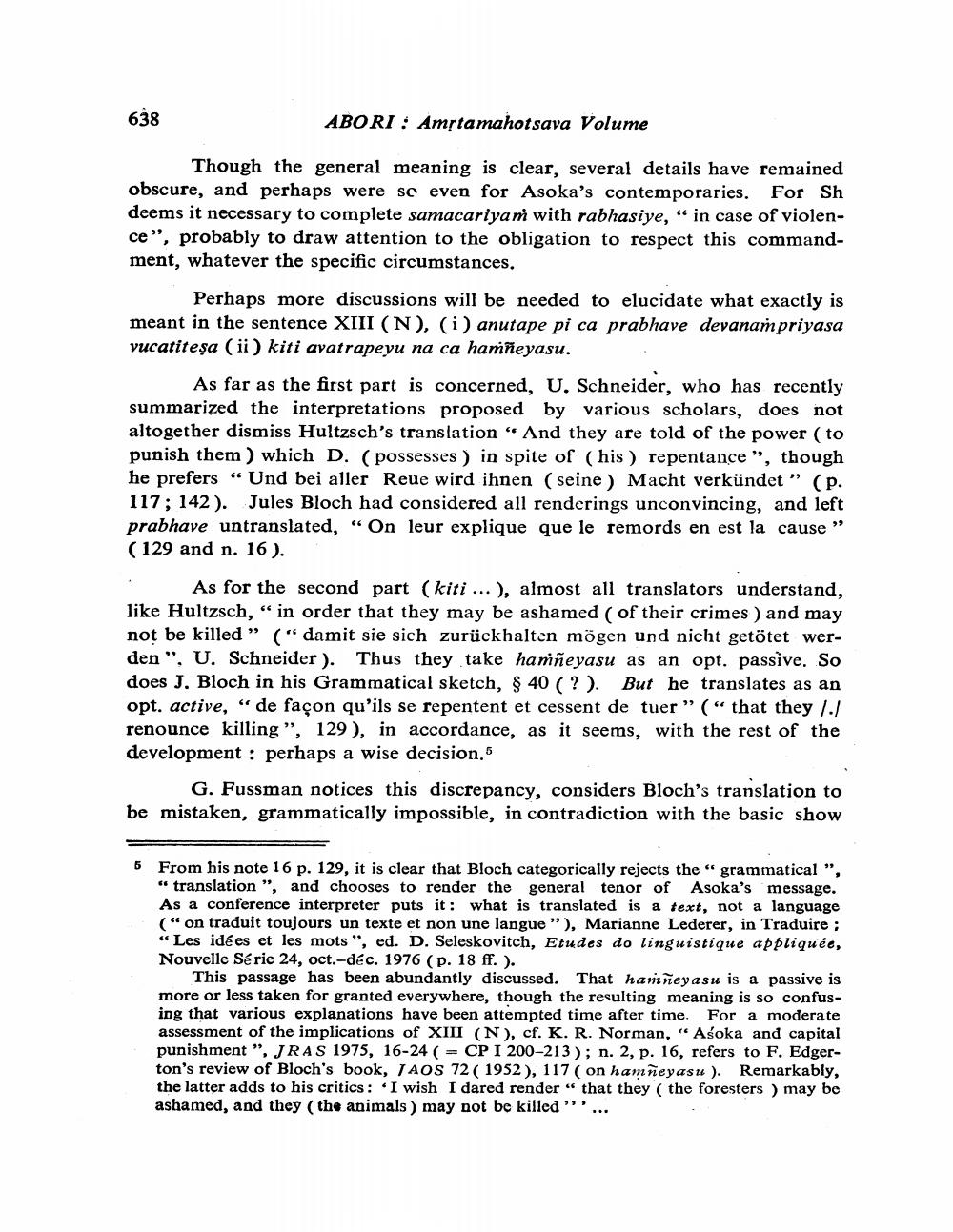Book Title: Double Optative Suffix In Prakrit Asoka XIII Na Hamnesu Na Hamneyasu Author(s): Colette Caillat Publisher: Colette Caillat View full book textPage 2
________________ 638 ABORI : Amstamahotsava Volume Though the general meaning is clear, several details have remained obscure, and perhaps were se even for Asoka's contemporaries. For Sh deems it necessary to complete samacariyam with rabhasiye, “in case of violence”, probably to draw attention to the obligation to respect this commandment, whatever the specific circumstances. Perhaps more discussions will be needed to elucidate what exactly is meant in the sentence XIII (N), (i) anutape pi ca prabhave devanampriyasa vucatiteșa (ii) kiti avatrapeyu na ca hamñeyasu. CumineusU. As far as the first part is concerned, U. Schneider, who has recently summarized the interpretations proposed by various scholars, does not altogether dismiss Hultzsch's translation " And they are told of the power (to punish them ) which D. (possesses ) in spite of (his ) repentance”, though he prefers “ Und bei aller Reue wird ihnen (seine) Macht verkündet” (p. 117; 142). Jules Bloch had considered all renderings unconvincing, and left prabhave untranslated, “On leur explique que le remords en est la cause" ( 129 and n. 16). As for the second part (kiti ... ), almost all translators understand, like Hultzsch,“ in order that they may be ashamed of their crimes ) and may not be killed " (" damit sie sich zurückhalten mögen und nicht getötet werden ", U. Schneider). Thus they take hamñeyasu as an opt. passive. So does J. Bloch in his Grammatical sketch, $ 40 (?). But he translates as an opt, active, “de façon qu'ils se repentent et cessent de tuer” (“that they /./ renounce killing”, 129), in accordance, as it seems, with the rest of the development : perhaps a wise decision. G. Fussman notices this discrepancy, considers Bloch's translation to be mistaken, grammatically impossible, in contradiction with the basic show 5 From his note 16 p. 129, it is clear that Bloch categorically rejects the “ grammatical", " translation ", and chooses to render the general tenor of Asoka's message. As a conference interpreter puts it: what is translated is a text, not a language (“on traduit toujours un texte et non une langue”), Marianne Lederer, in Traduire ; “Les idées et les mots ", ed. D. Seleskovitch, Etudes do linguistique appliquée, Nouvelle Série 24, oct.-déc. 1976 (p. 18 ff.). This passage has been abundantly discussed. That hamñeyasu is a passive is more or less taken for granted everywhere, though the resulting meaning is so confusing that various explanations have been attempted time after time. For a moderate assessment of the implications of XIII (N), cf. K. R. Norman, “Asoka and capital punishment". JRAS 1975, 16-24 ( = CP I 200-213); n. 2, p. 16, refers to F. Edgerton's review of Bloch's book, TAOS 72 ( 1952), 117 ( on hamneyasu ). Remarkably, the latter adds to his critics: I wish I dared render " that they (the foresters ) may be ashamed, and they (the animals ) may not be killed "'...Page Navigation
1 2 3 4 5 6 7 8 9
